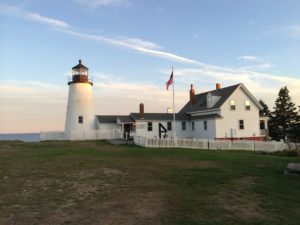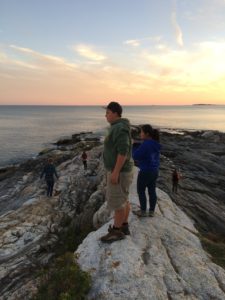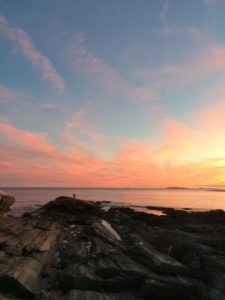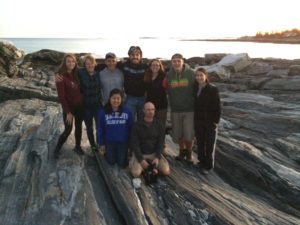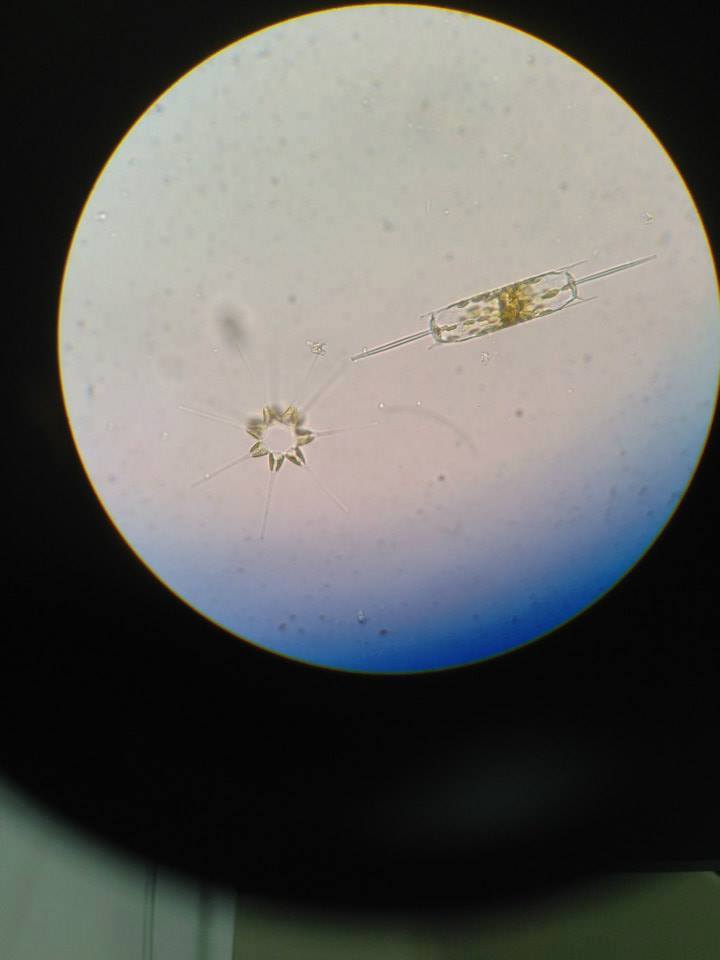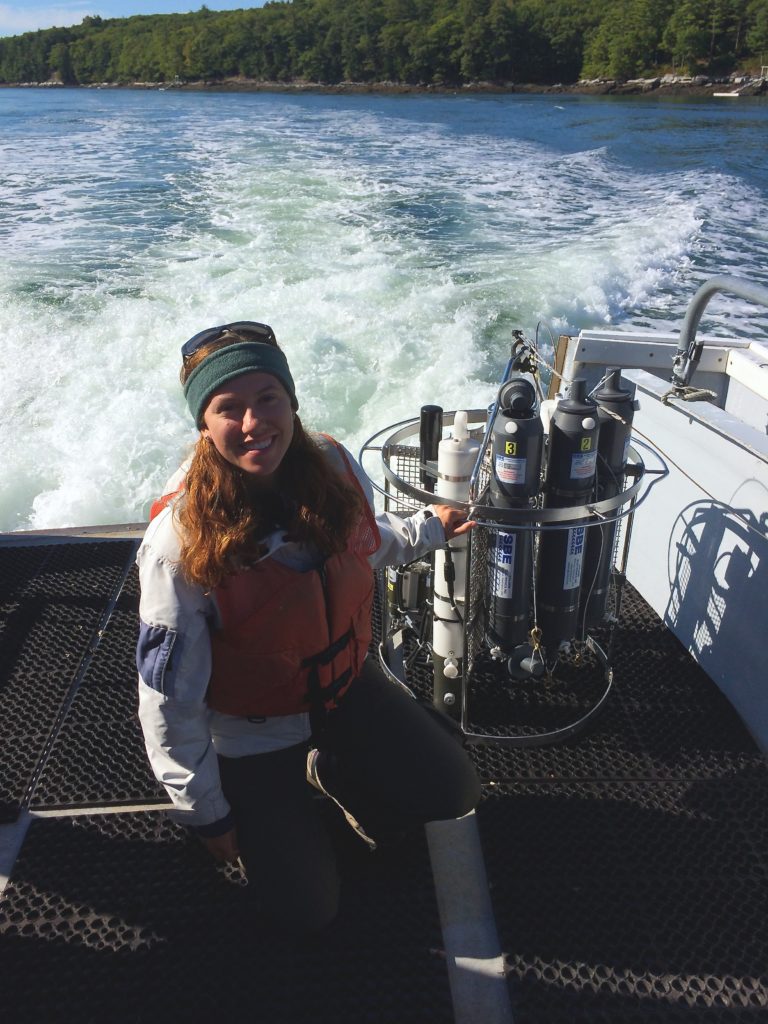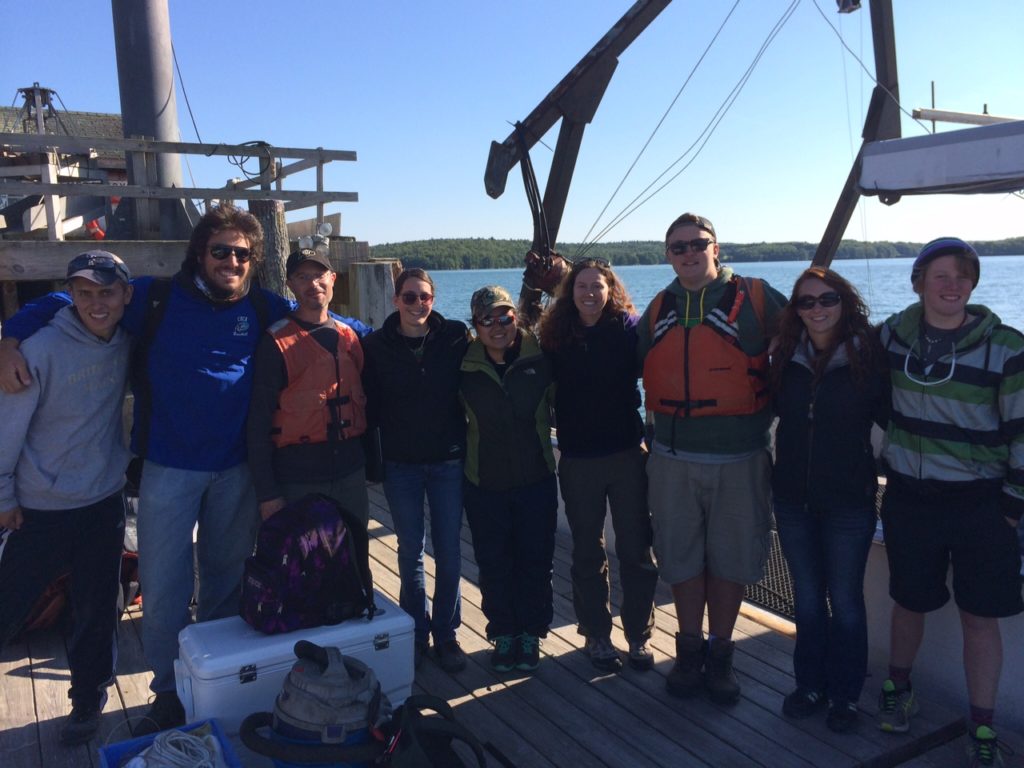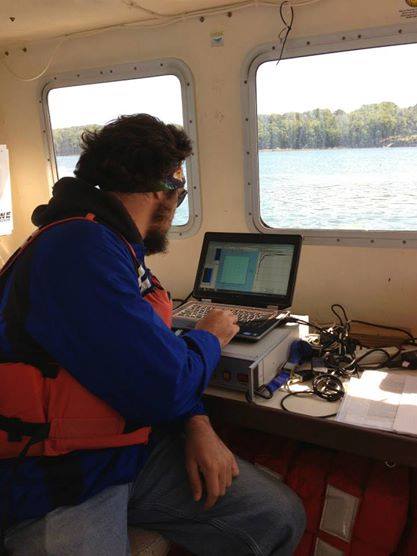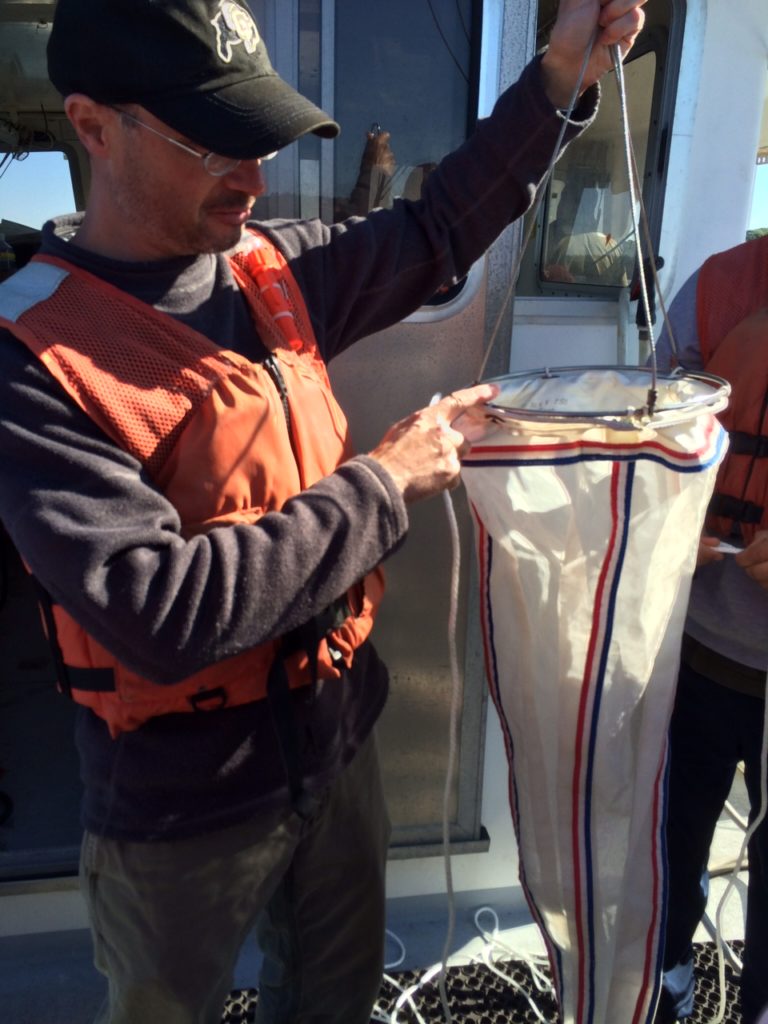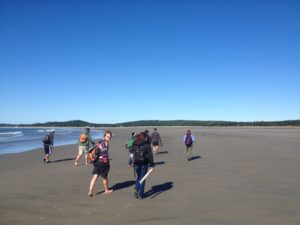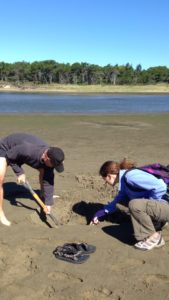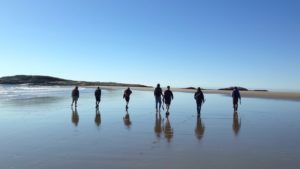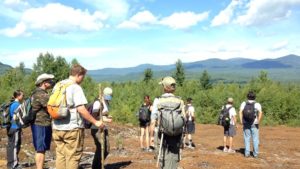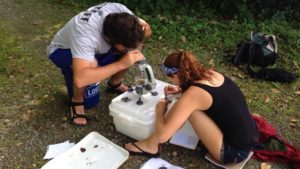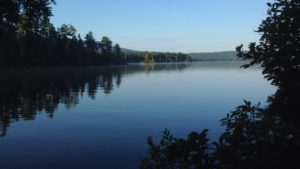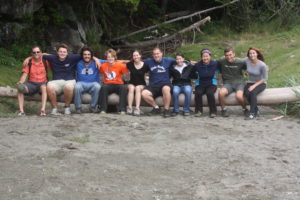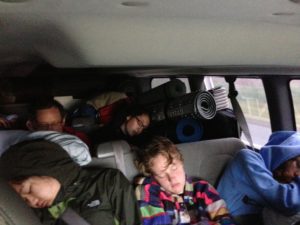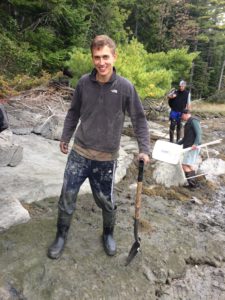
We arrived at Lowe’s Cove just as the tide was beginning to flush away the mudflat. We left the Darling Marine Center a few minutes ago and all of the students had begun to feel the stresses of research.
Matt asked Dr. Greg Teegarden, “What should we bring to the cove?”
“This is a learning exercise and I want everyone to follow their proposals and bring what they think they need. If I tell you what to bring and what to do, this becomes a cookbook experiment, which has less value than struggling to figure it out,” replied Dr. Teegarden.
By the looks on all of the students’ faces I could tell they were not impressed, because sometimes it is easier to be given information than to figure it out yourself. Nonetheless here we were just about to step onto the mudflat. Greg had just delivered suggestions about the rambunctious technique required to travel efficiently on a mudflat. At this moment everyone made haste and took their first steps on to the deceivingly stable, stinking, gait-hindering mudflat.
At this time I was scurrying around the upper rocks trying to find the perfect placement for cameras to capture all of the activities. It all happened so quickly. I watched carefully as everyone took his or her first few steps onto the mudflat. I watched Dr. Teegarden race onto the mudflat with grace and proficiency, while Matt slumbered onto the mud, finding it nearly impossible to move. When I compared the techniques of the inexperienced students to the experienced waddle of Dr. Teegarden I was fascinated.
I wonder how long it will take before someone falls?
The thought had just passed my mind when I looked out and saw Erin screeching as her center of gravity went back, but her feet stayed deep within the grasp of the malicious mud. I watched as Erin’s automatic balance correction mechanism attempted to correct the fatal misalignment of her body. We often take for granted the amazing mechanisms that are involved in keeping humans upright. From my vantage point I could clearly see Erin’s body struggling to stay standing. As she realized her feet could not shuffle to keep herself from falling her arms flailed out and began to create concentric circles in the air, as though she were attempting to fly like an eagle in the sky. Unfortunately, the end was the same for many of the ESS students, a butt covered in mudflat mud.
Just as this scene ended another began, this time it was Nhu. Nhu always has a fantastic reaction to new situations. This day was no exception. As Nhu took her first steps onto the mudflat you could hear her squealing at the new experience. As she attempted to adjust her gait and take the advice of Dr. Teegarden, I could see her mind begin to wonder if Dr.
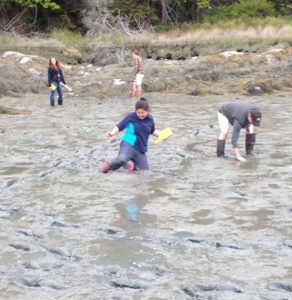
Teegarden was giving true advice, or if he was simply bring everyone onto the mudflat for his own mischievous experiment. As Nhu scrambled across the mud, I watched almost as in slow motion. She took a step and went to lift her back right foot, but the mud grasped it like a mother holding her child’s hand while they crossed the road. Nhu attempted a correction, but the laws of nature had already made the decision, she was going to fall into the mud. As her knees made contact into the mud, I later found out that her expression was one of disgust, anxiety, and amusement.
I could continue with the many accounts of the struggles of the mudflat, but I want to keep some stories for people to share when they return. I will leave you with some advice for when you go onto the mudflat. Some of this advice is from Dr. Teegarden, and some of the advice is from my own accounts and experience from this day.
- When you walk on a mudflat, keep your center of gravity low and walk with pep in your step.
- When you are walking on a mudflat, know your destination and don’t stop, otherwise you will feel the hands of mud come upon you.
- If you do stop, do not forget you are on a mudflat when you get ready to start moving again, otherwise you could fall flat on your face. Instead when your foot is stuck, simply twist your heel out and up. This will help break the grasp of the mud.
- Never travel alone. If there was one revelation I noticed with the group traveling on the mud was how everyone relied on the help of friends to pull each other out of the mud (see video of Erin for an example)
- Do not forget to have fun. The mudflat is a place to study and gather information, but from my brief experience yesterday, it is also a place to have fun.
-Robert Michaud
